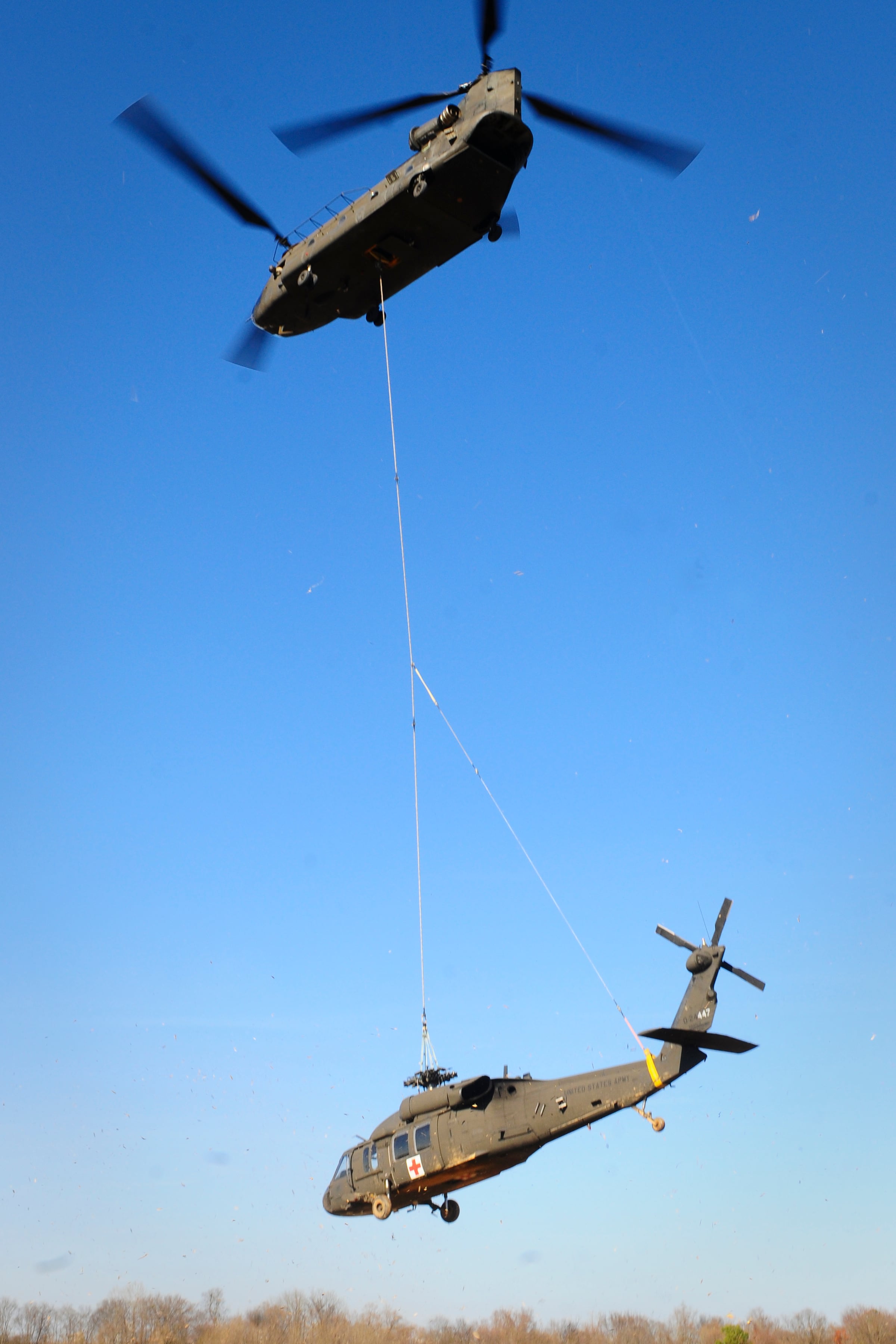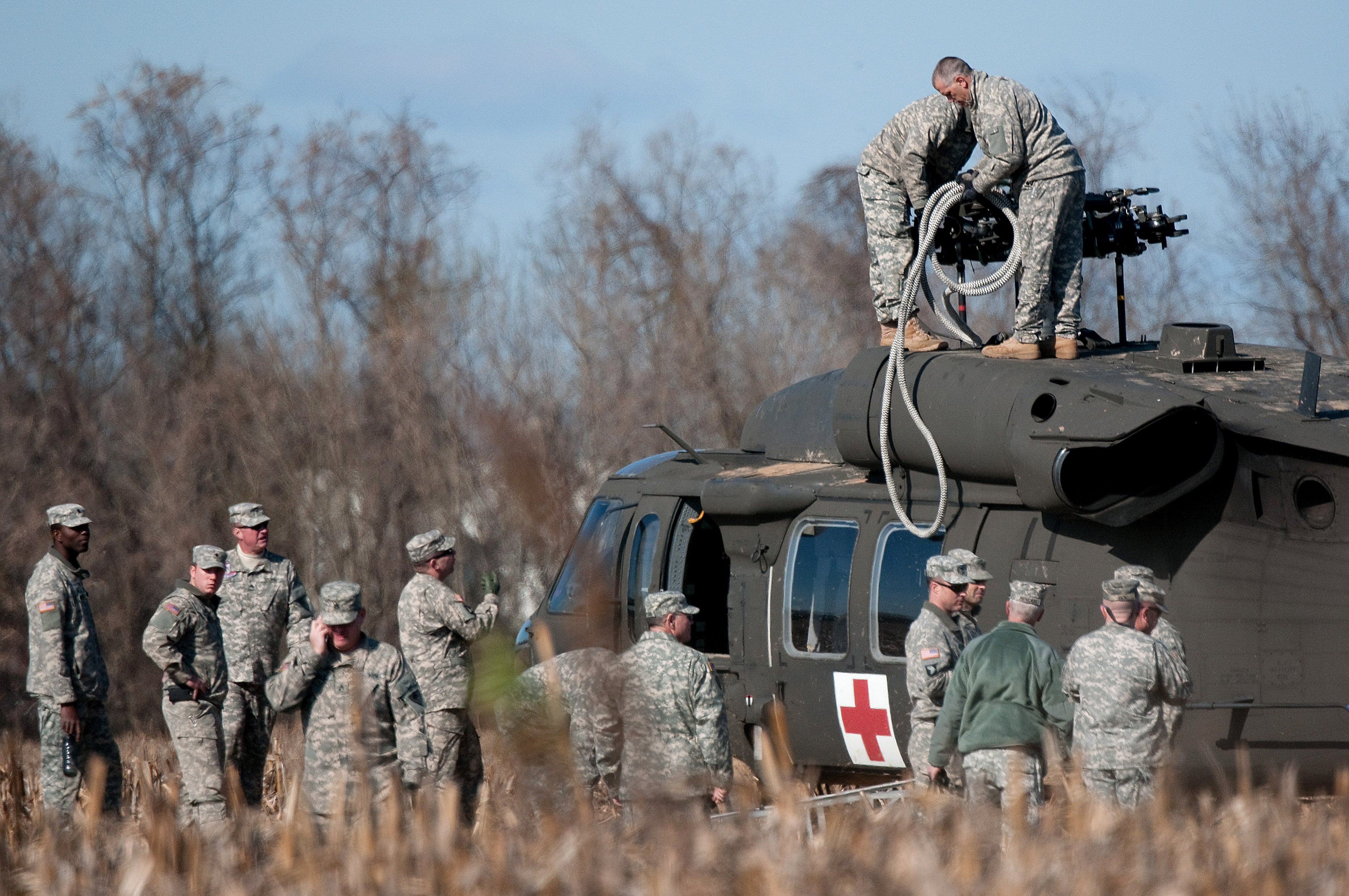Three South Carolina National Guard helicopter pilots walked away from a harrowing Dec. 3 emergency landing in which their UH-60 Black Hawk helicopter reportedly plummeted 6,000 feet in less than a minute after a main rotor failure.
The two pilots (the third pilot was a passenger) managed to land the helicopter in a field not far from a water treatment plant, a school and residences near I-77 just a couple miles southeast of Columbia, South Carolina, not far from Fort Jackson.
Four days later a CH-47 Chinook helicopter sling-loaded the downed aircraft to McEntire Joint National Guard Base in Eastover, South Carolina.
An investigation into the cause of the malfunction is ongoing; because of that, Guard spokeswoman Maj. Cindi King said by policy the Guard could not name the three pilots or make them three pilots available for an interview. She said the investigation could take up to six months.
Lt. Col. Andrew Batten, the state aviation officer for the Guard, said "we anticipate it was a mechanical issue" that caused the malfunction.
He also said that the pilots' training functioned when the rotor ceased to.
"The nature of the emergency required them to take emergency action steps," Batten told Army Times. "In certain emergencies they are required to respond without hesitation. The steps are kind of beaten into us in our training, from flight school to advanced training on particular aircraft."
After a loud bang during the instrumentation flight, a vibration began and quickly escalated; it turned out that the motor had died.

The Black Hawk was transported under a South Carolina Army National Guard CH-47 Chinook from Detachment 1, B-Company, 2-238th General Support Aviation Battalion, Army Aviation Support Facility in Greenville, South Carolina.
Photo Credit: Sgt. Brian R. Calhoun
Batten said the pilots assigned to Detachment 2, F Company, 1-171st General Support Aviation Battalion quickly responded with autorotation. That allows the blades to spin with their already-existing momentum from the then-failed motor, and conserve that momentum by angling them so air flows through them rather than directly against them.
They targeted a the cornfield as a landing site, and maneuvered to streamline the descent, then maximizeing air resistance, caused by remaining momentum of the blades, against the fall by pitching upward at the end.
Batten said putting the aircraft down in the open landing space helped spare injury, collateral damage and more damage to the aircraft. So did the soft, saturated muddy ground at the time of the incident.

Soldiers prepare the Black Hawk for transport out of a cornfield in South Carolina on Sunday, Dec. 7. The cause of the main rotor malfunction remains under investigation.
Photo Credit: Staff Sgt. Roberto Digiovine
After the landing, the Guard set to gathering evidence from the scene and preparing the Black Hawk for transport. The rotor blades — some shown in by photos to be badly damaged — were taken off and transported separately. Gas was removed from the tank, some of it sampled as evidence.
The frame's structural integrity was tested to ensure it could make the trip dangling from the Chinook without falling apart.
Eventually the helicopter was sling loaded under rigged and attached to the Chinook, which was accompanied by a UH-72 Lakota had flown in from the National Guard Army Aviation Support Facility in Greenville, South Carolina.
King said traffic on the highway backed up for miles as people who had seen the crash stopped to see what was going on.
She also said the investigation could take up to six months.




